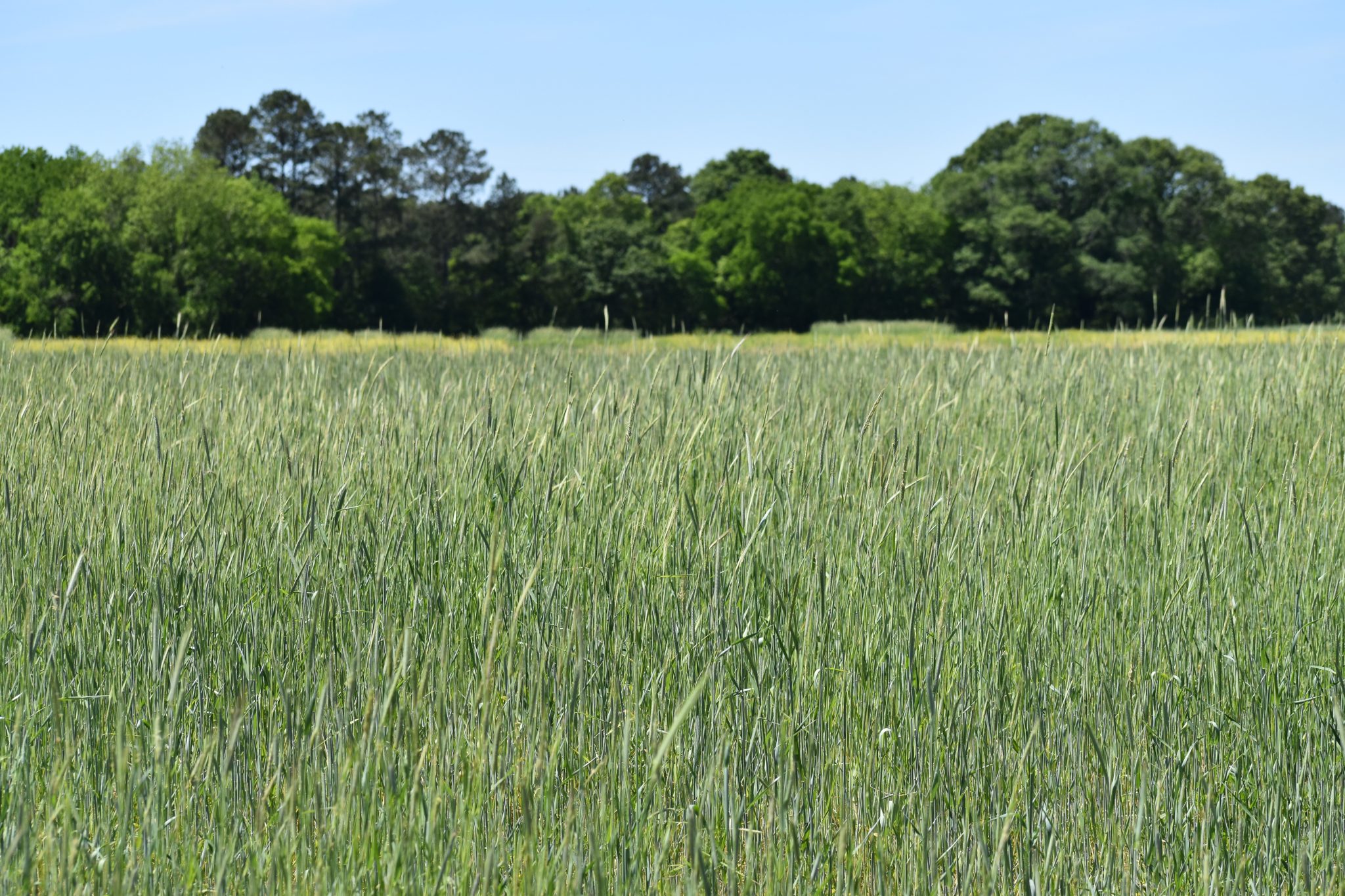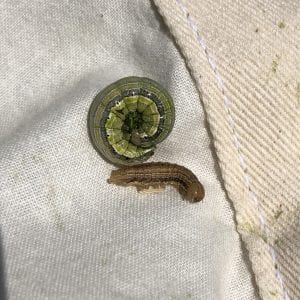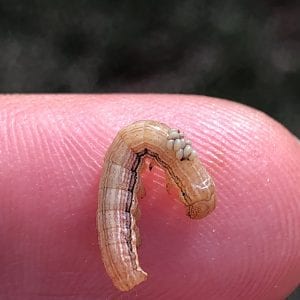Crop Production

Be on the lookout for true armyworms in grain crops and pastures. They often show up in wheat fields and grass pastures in Alabama and have the potential to cause damage. They can also damage seedling corn. Armyworms will defoliate the foliage but can also clip or damage the heads of maturing wheat plants. In young corn, they will chew the plants at the ground, similar to cutworm damage.
Identification
True armyworms look similar to fall armyworms but the two can be distinguished by looking at their head capsule. Fall armyworms have an inverted “Y” on their head, while true armyworms lack the “Y” and have mottled coloration on their heads. True armyworms come in various colors, but they will have multiple longitudinal stripes down their body.
Use a sweep net in wheat or pastures to find worms. Inspect corn plants individually to find any feeding damage. Avoid scouting in the heat of the day as the worms will be hiding in or on the soil or in leaf litter. Visit several parts of the field to get an accurate representation of damage or populations. Increased bird activity in the field may also be a sign that you have armyworms.
- Figure 1. True armyworms captured using a sweep net. Note the longitudinal stripes and mottled coloration on their head capsules.
- Figure 2. Armyworms are often killed by naturally occuring populations of parasitic wasps and flies, and microorganisms.
Control
High temperatures and natural enemies, such as parasitoids or predators, will help reduce populations of true armyworms in the field. But remember that 80 percent of the damage is caused by the biggest caterpillars as they get ready to pupate. So if large caterpillars continue to feed, incidental defoliation may turn to head clipping and thus yield loss. Pyrethroids will work well in grains and pastures but make sure to get adequate coverage. Treatments in small grains are warranted when larval numbers exceed four larvae/square foot before pollen shed and eight larvae/square foot after pollen shed. In grass forages, treat if you find two to three larvae/square foot. More information can be found in the Alabama Extension Integrated Pest Management Guides.



